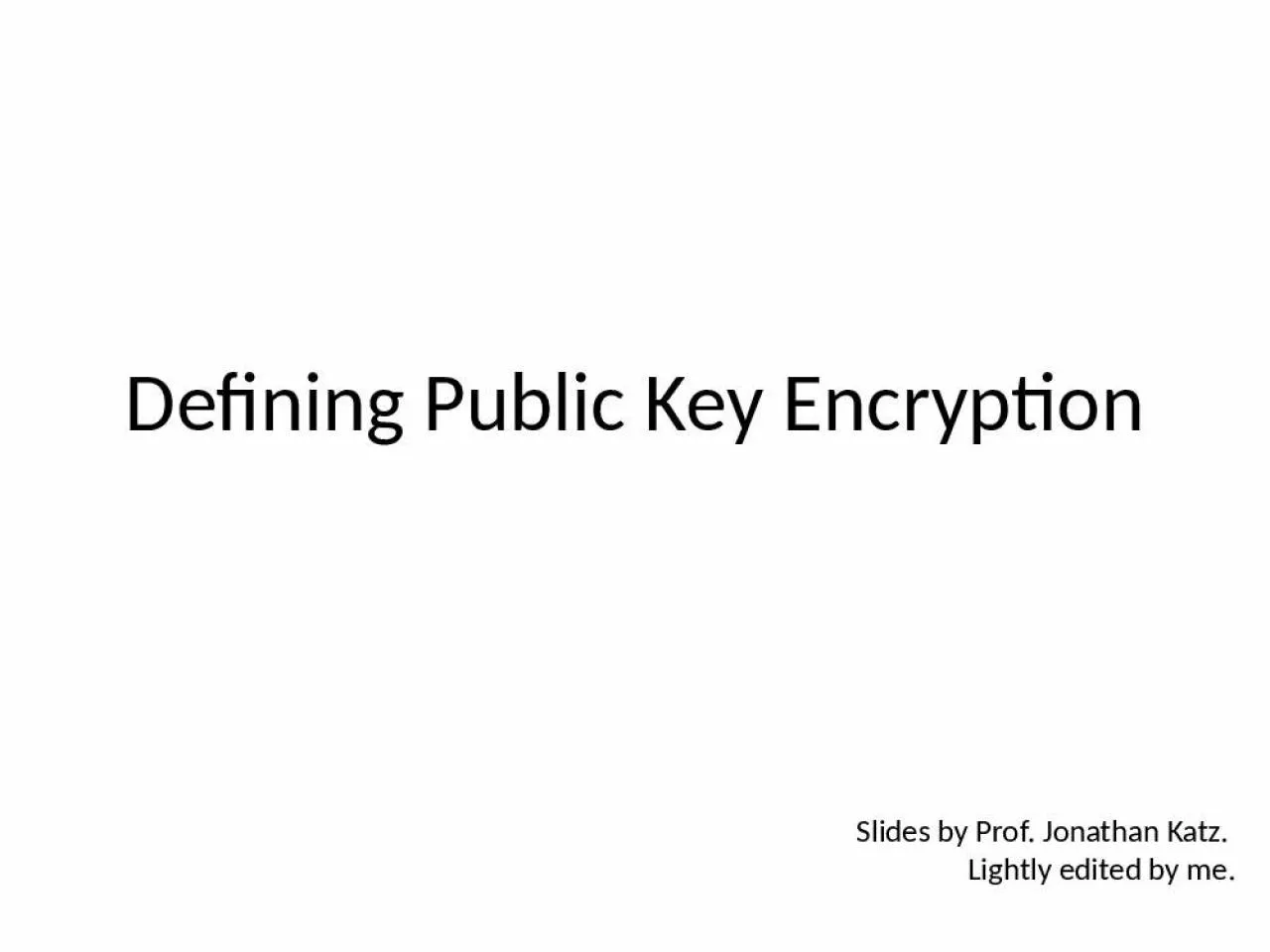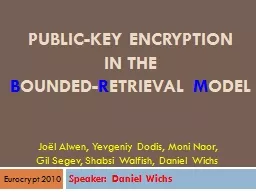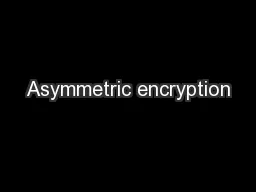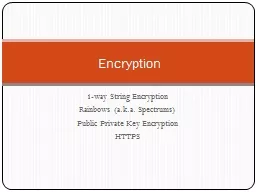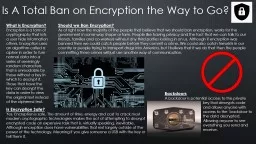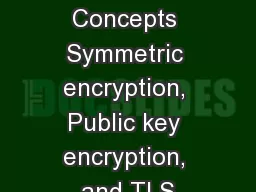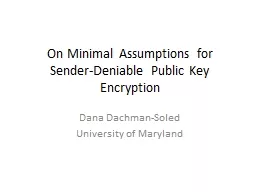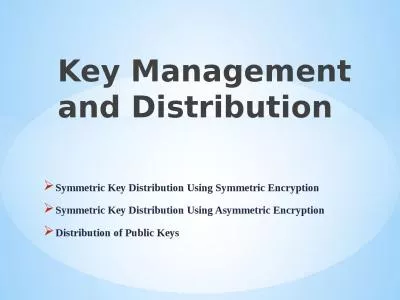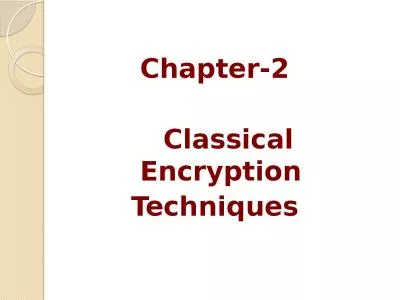PPT-Defining Public Key Encryption
Author : fauna | Published Date : 2022-05-18
Slides by Prof Jonathan Katz Lightly edited by me Review privatekey setting Two or more parties who wish to securely communicate share a uniform secret key k
Presentation Embed Code
Download Presentation
Download Presentation The PPT/PDF document "Defining Public Key Encryption" is the property of its rightful owner. Permission is granted to download and print the materials on this website for personal, non-commercial use only, and to display it on your personal computer provided you do not modify the materials and that you retain all copyright notices contained in the materials. By downloading content from our website, you accept the terms of this agreement.
Defining Public Key Encryption: Transcript
Download Rules Of Document
"Defining Public Key Encryption"The content belongs to its owner. You may download and print it for personal use, without modification, and keep all copyright notices. By downloading, you agree to these terms.
Related Documents

